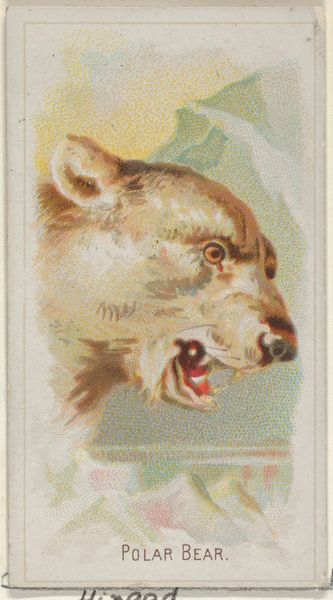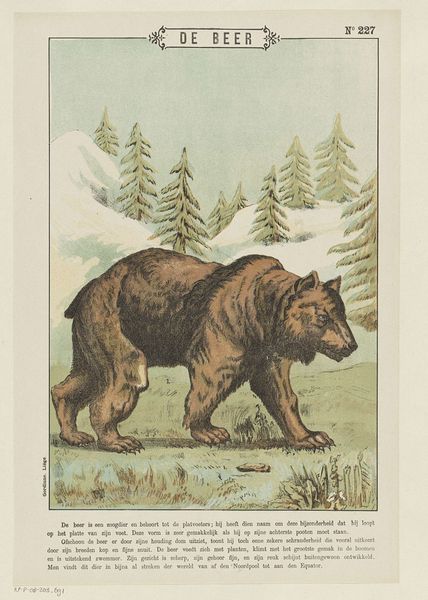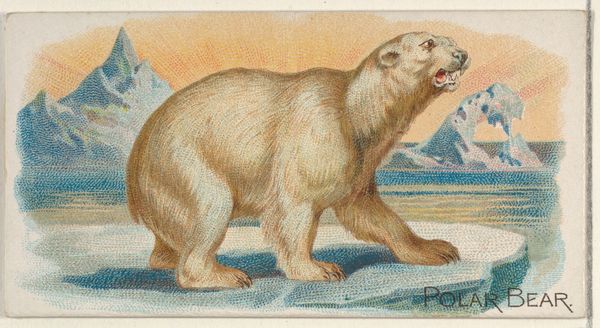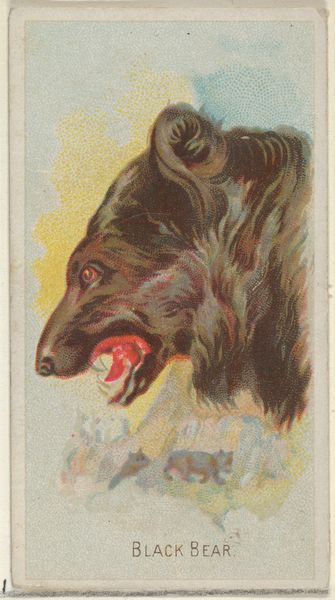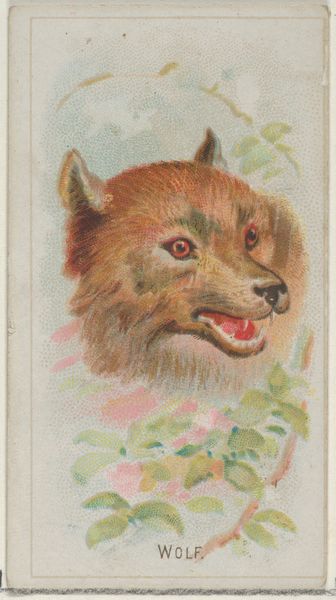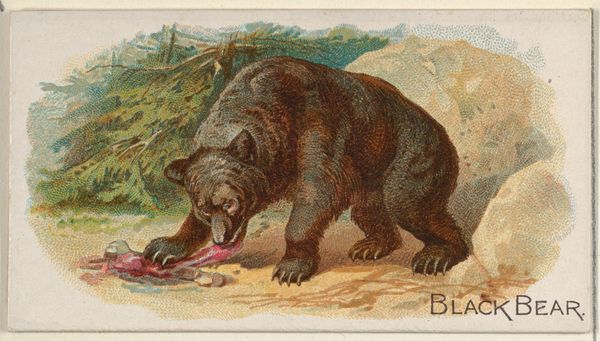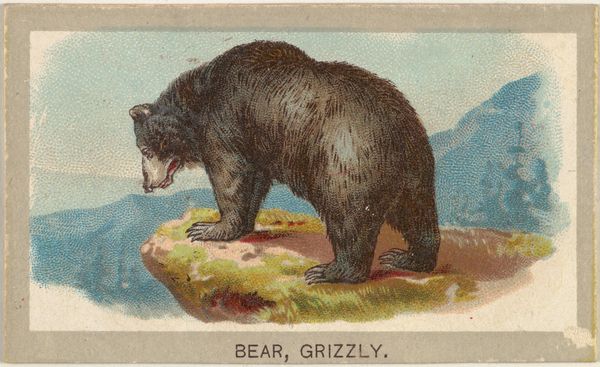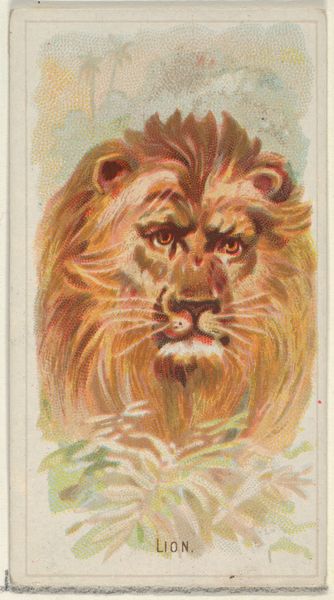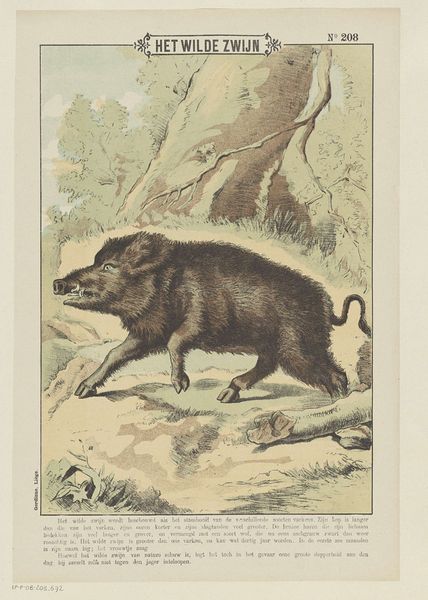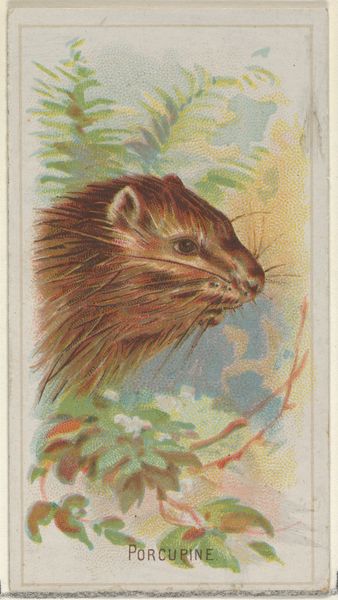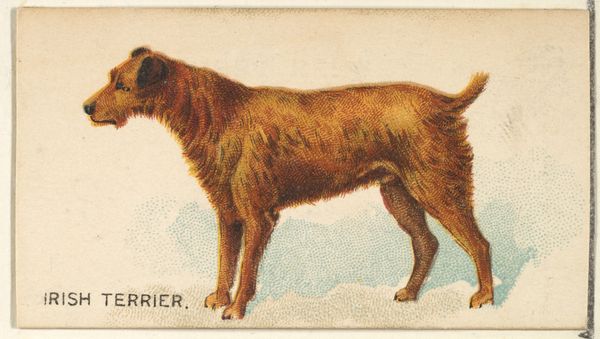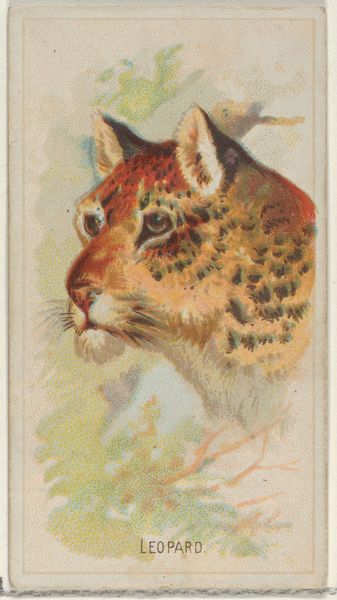
Grizzly Bear, from the Wild Animals of the World series (N25) for Allen & Ginter Cigarettes 1888
0:00
0:00
drawing, coloured-pencil, print
#
portrait
#
drawing
#
still-life-photography
#
coloured-pencil
# print
#
coloured pencil
#
realism
Dimensions: Sheet: 2 3/4 x 1 1/2 in. (7 x 3.8 cm)
Copyright: Public Domain
Curator: Looking at this "Grizzly Bear," part of the "Wild Animals of the World" series produced by Allen & Ginter in 1888, I’m immediately struck by how different its symbolic register would have been at that time. Editor: It does have an almost dreamlike quality. I’m intrigued by the almost pointillist effect created using coloured pencils. The texture of the bear's fur contrasts so starkly with the flat, pale background and mountain in the distance. What were these images printed on? Curator: These were included in cigarette packs, akin to trading cards. Allen & Ginter was a major tobacco company, and these cards were enormously popular. Before mass media, this kind of readily available imagery would've contributed to the public’s understanding and even idealization of the American wilderness, and perhaps informed people's sense of American identity. The Grizzly alone certainly projects a kind of powerful independence. Editor: Knowing they were promotional items gives the image a different feel. They had to be cheap and quick to make, but were intended for collection. I wonder who was employed in producing these drawings, and in such great volumes! It makes me think about labor and industrialization, mass production shaping how animals were even perceived. It's not just art for art's sake. Curator: Exactly! And consider the context. The late 19th century was a time of westward expansion. Depicting these wild animals as almost noble felt nostalgic, while glossing over issues of animal endangerment caused by resource extraction and development, it is a kind of visual myth-making that served industrial interests. The card’s popularity likely further reinforced these beliefs. Editor: Fascinating! And the medium—coloured pencils—seems apt for something mass-produced, less precious perhaps, aligning with the object's transient, consumerist nature. This blend of art, commerce, and our perception of nature, I think that is just spot on! Curator: Indeed. These small cards functioned as carriers of larger ideas and aspirations of their time. The images still speak volumes to a contemporary audience. Editor: Absolutely, it really demonstrates how ordinary objects can tell profound stories about shifts in society and manufacturing!
Comments
No comments
Be the first to comment and join the conversation on the ultimate creative platform.
